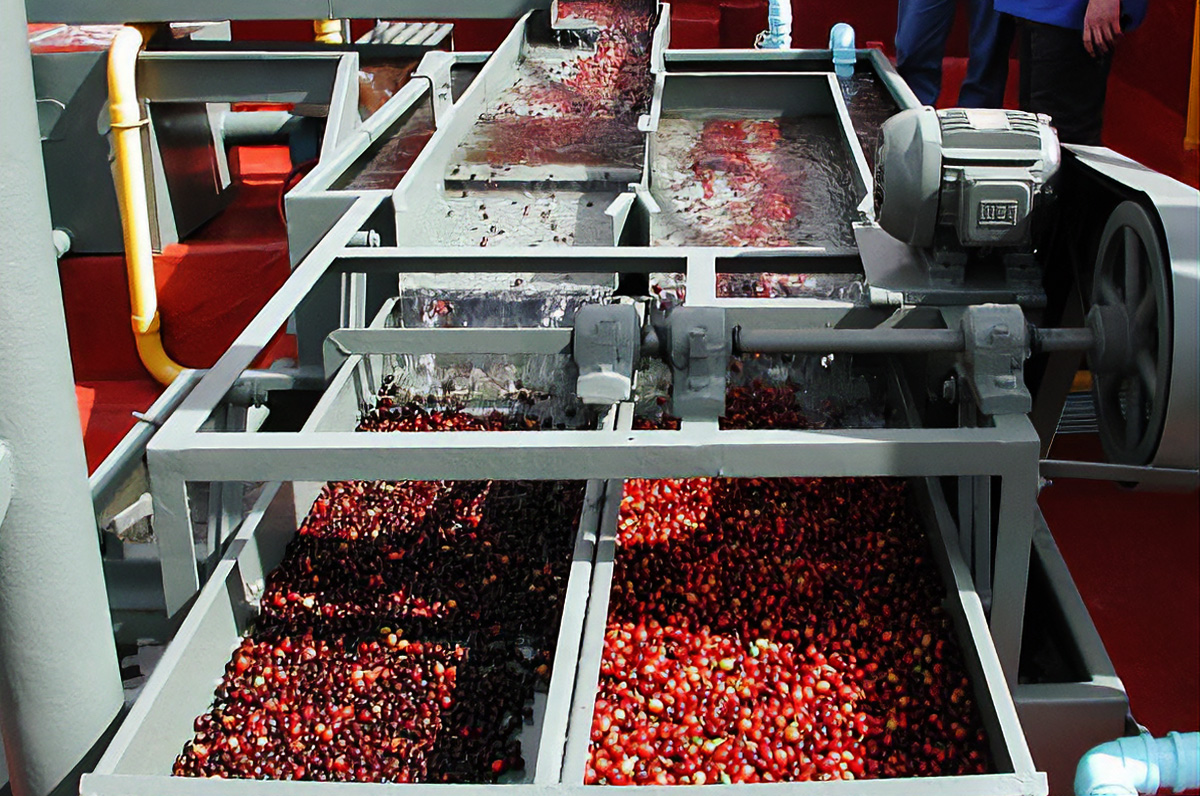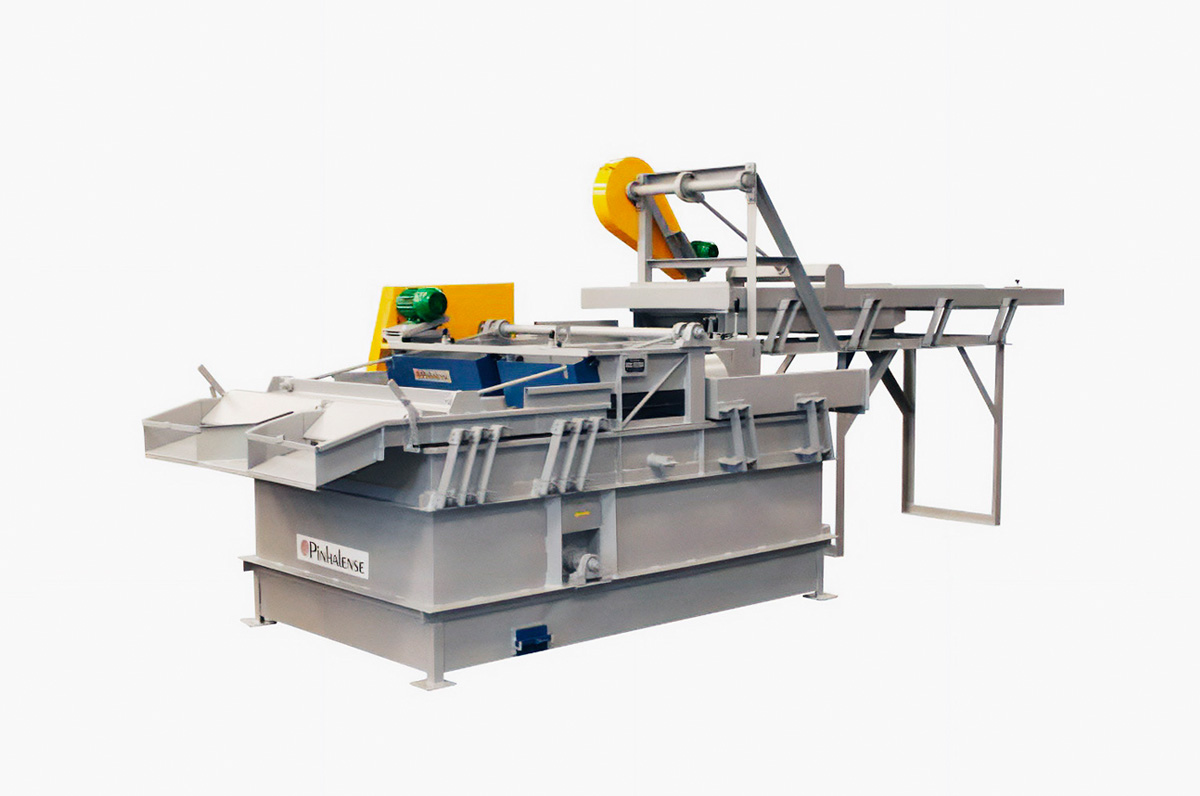Brazil, more than any other country, has driven new technologies in growing, harvesting, and processing. Producers aim to produce high-quality coffee as efficiently as possible, and many embrace new technologies in order to do so.
The use of technology and mechanisation during processing have become essential in Brazil because although the cost of labour is relatively high, buyers expect to pay low prices for Brazilian coffee. Where manual labour is scarce or on large-scale farms, selective picking is impractical. Brazilian processing methods have therefore had to adapt to a certain percentage of unripe fruit in the mix — either by separating the unripe fruit from the ripe cherry or by using processing techniques that reduce the unripe fruit’s negative impact on the final cup quality.
Sorting
‘In processing, the hydraulic separator was the breakthrough,’ explains Hugo Portes, a specialty coffee trader at CarmoCoffees. ‘It allows the farmer to pick everything in just two or three rounds of picking, using less labour.’ The hydraulic separator, called a lavador in Brazil, uses water to isolate the overripe floaters and unripe cherry from the best fruit, and it washes off impurities in the process. As well as improving quality, the hydraulic separator reduces the amount of overripe or unripe cherry sent to the depulper, reducing the amount of water and energy used in that stage.
A hydraulic separator, or lavador, washes impurities off coffee cherries and separates them by density
To reduce water use further and separate cherries with greater precision, a small number of farmers have installed optical sorters to replace the hydraulic separator, Hugo says. These machines are a big investment — around 300,000 reais (US$53,000) — but do not require any water to operate.
Producing Specialty
Despite the increasing size of the specialty coffee market worldwide, this reliance on processing as the main method of sorting coffee is unlikely to change.

